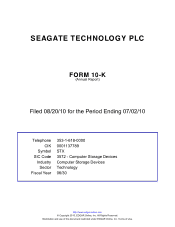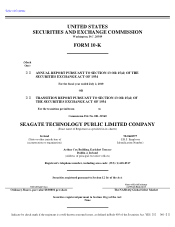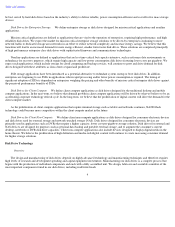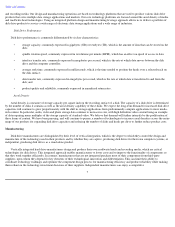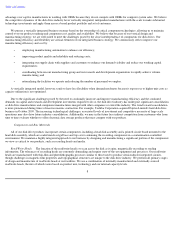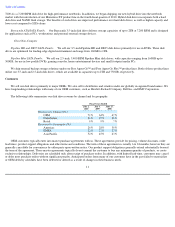Seagate 2009 Annual Report Download - page 8
Download and view the complete annual report
Please find page 8 of the 2009 Seagate annual report below. You can navigate through the pages in the report by either clicking on the pages listed below, or by using the keyword search tool below to find specific information within the annual report.
Table of Contents
be best served by hard disk drives based on the industry's ability to deliver reliable, power consumption efficient and cost effective mass storage
devices.
Disk Drives for Enterprise Storage. We define enterprise storage as disk drives designed for mission critical applications and nearline
applications.
Mission critical applications are defined as applications that are vital to the operation of enterprises, requiring high performance, and high
reliability disk drives. We expect the market for mission critical enterprise storage solutions to be driven by enterprises continuing to move
network traffic to dedicated storage area networks in an effort to reduce network complexity and increase energy savings. We believe that this
transition will lead to an increased demand for more energy efficient, smaller form factor disk drives. These solutions are comprised principally
of high performance enterprise class disk drives with sophisticated firmware and communications technologies.
Nearline applications are defined as applications that are less time-critical but capacity-intensive, such as reference data environments or
redundancy for recovery purposes, which require high capacity and low power consumption disk drives featuring lower costs per gigabyte. We
expect such applications, which include storage for cloud computing and backup services, will continue to grow and drive demand for disk
drives designed with these attributes as data centers expand and proliferate.
SSD storage applications have been introduced as a potential alternative to redundant system startup or boot disk drives. In addition,
enterprises are beginning to use SSDs in applications where rapid processing and/or lower power consumption is required. The timing of
significant adoption of SSDs is dependent on enterprises weighing the pricing and other benefits of mission critical enterprise disk drives against
the perceived performance benefits of SSDs.
Disk Drives for Client Compute. We define client compute applications as disk drives designed for the traditional desktop and mobile
compute applications. In the near-
term, we believe that demand growth in client compute applications will be driven by what we believe to be an
accelerating corporate technology refresh cycle. In the long-
term, we believe that the proliferation of digital content will drive the demand for the
client compute market.
As the proliferation of client compute applications that require minimal storage such as tablets and netbooks continues, NAND flash
technology could become more competitive within the client compute market in the future.
Disk Drives for Client Non-Compute. We define client non-compute applications as disk drives designed for consumer electronic devices
and disk drives used for external storage and network-attached storage (NAS). Disk drives designed for consumer electronic devices are
primarily used in applications such as DVRs that require a higher capacity, lower cost-per-
gigabyte storage solution. Disk drives for external and
NAS devices are designed for purposes such as personal data backup and portable external storage, and to augment the consumer's current
desktop, notebook or DVR disk drive capacities. Client non-compute applications also include devices designed to display digital media in the
home theater. We believe the proliferation of high definition and media-rich digital content will continue to create increasing consumer demand
for higher storage solutions.
Disk Drive Technology
Overview
The design and manufacturing of disk drives depends on highly advanced technology and manufacturing techniques and therefore requires
high levels of research and development spending and capital equipment investments. Manufacturing our disk drives is a complex process that
begins with the production of individual components and ends with a fully assembled unit. We design, fabricate and assemble a number of the
most important components found in our disk drives, including read/write heads
6

